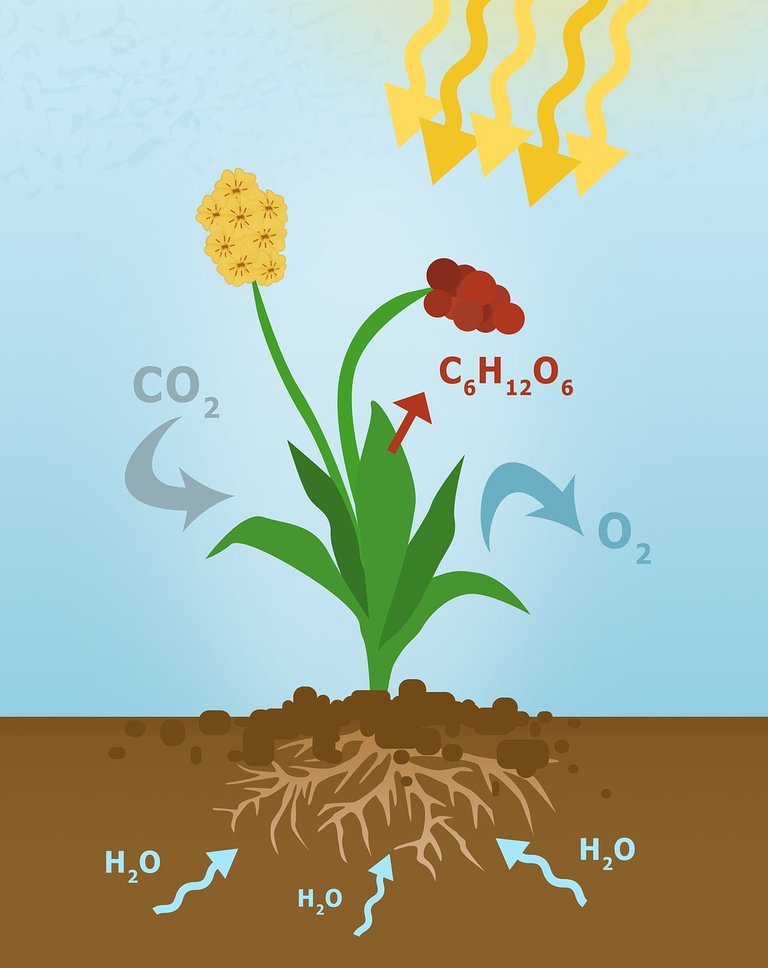Plants Alone Can't Give Humans The Required Oxygen For Survival
Based on our basic knowledge of biology and chemistry, you will agree with me that when plant breath in carbon dioxide during the process of photosynthesis, it releases oxygen out which is what we use for our day to day activities but this is not actually true because the oxygen we inhale today is not gotten from what plants exhale as of today, it is millions of years old. So with this, I begin to ask myself if why we plant trees are actually justified. If we plant trees as a carbon reservoir, they are kinda doing the job at least a little but if we are planting them so we can get oxygen to breath in when they breath it out, then there is a lot we need to learn and unlearn.
In your elementary biology, you might have been told that plant absorb sunlight, breathes in carbon dioxide, takes in water so some chemistry can be done in the plant to convert the CO2 and H2 to sugar and oxygen. Nice but this chemistry that we were taught isn't complete because this doesn't just happen like that, there are a lot of things that are left out.
When we mention photosynthesis, it isn't only plants that do it, other organisms like Diatom Algae, Dinoflagellate, and Cyabobacteria also participate in this complex chemical process and photosynthesis is a complex process that we are still learning about till date. Photosynthesis has to do with both the sun part and the food part. With the sun part, the plant gets and move electrons around. Plants and other organisms that utilizes photosynthesis use some kind of pigment which possesses the molecular structure that allows for them to absorb certain wavelength of light from the sun for the purpose of energy. In plants, we know it as chlorophyll and it absorb certain light wavelength and the process of absorbing the light starts from an organelle known as chloroplast.
When the light is absorbed, some electrons are excited but because they are unstable, they get passed down to the other photosynthetic pigments. To replace the excited electrons it gives out, it absorbs water from the root a breaks down its molecule and send some of the electrons back to chlorophyll but the chloroplast store the hydrogen ions gotten from the water why the oxygen is being released. The electron is then sent to NADPH which is where chloroplast store electrons gotten from the sun. The protons which was gotten from this process is used to power the make up of ATP.
The light independent reaction of photosynthesis is where the sugar part of the equation appears and this starts when plant absorbs carbon dioxide through the stomata which allows for the entry and carbon dioxide and the exit of oxygen. Rubisco makes the CO2 food by pulling the carbon from the it. It then combines the carbon to G3P which is where NADPH and ATP is required to help transform the intermediate sugar into Glucose. This entire process of turning CO2 into glucose is called carbon fixation using Calvin cycle.
While Rubisco is doing its job, it is not highly selective as it is very slow as it processes very small amount of molecules per second and it finds it difficult to differentiate oxygen and carbon dioxide and when it binds to oxygen instead of CO2, it ends up using energy instead of making the energy the plants needs for its daily. Plants need a lot of these enzymes to be able to perform their function because they mistake O2 and CO2 up to 20%.
Back to where we get our oxygen from. About 50% to 85% of the oxygen we breath come from the ocean and the photosynthetic organisms that live there like Algae, large plants, and prochlorococcus which is a single bacteria phytoplankton and it is responsible for about 20% of the earth's oxygen. By number, prochlorococcus is the most abundant photosynthetic organism on earth.
One thing we need to understand is as photosynthetic organisms produces oxygen, they use a lot of them as well because they need it to fuel their mitochondria so as to be able to break down food to sugar which they need to perform their functions and activities and to do so, plants utilize about half of the oxygen they are to exhale while the rest go to the biomes close to the plant. So is plant really giving we humans oxygen or the are giving the oxygen to the closest organisms around them?
FOR FURTHER READING
https://pmc.ncbi.nlm.nih.gov/articles/PMC5264509/
https://ssec.si.edu/stemvisions-blog/what-photosynthesis
https://www.rsb.org.uk/images/15_Photosynthesis.pdf
https://asm.org/articles/2022/february/the-great-oxidation-event-how-cyanobacteria-change
https://www.rhs.org.uk/advice/understanding-plants/how-plants-breathe
https://bio.libretexts.org/Bookshelves/Microbiology/Microbiology
https://www.rhs.org.uk/advice/understanding-plants/how-plants-breathe
https://study.com/academy/lesson/plant-cell-mitochondria-structure-role.html
https://study.com/academy/lesson/cellular-respiration-in-plants.html
https://www.pnas.org/doi/10.1073/pnas.2025638118
https://oceanservice.noaa.gov/facts/ocean-oxygen.html
https://earthsky.org/earth/how-much-do-oceans-add-to-worlds-oxygen/
https://www.sciencedirect.com/science/article/pii/S095816691730099X
https://e360.yale.edu/digest/scientists-fix-photosynthetic-inefficiency-boost-crop-yields
https://www.sciencedirect.com/topics/biochemistry-genetics-and-molecular
https://courses.lumenlearning.com/suny-biology1/chapter/the-calvin-cycle/


You received an upvote ecency
Thanks for your contribution to the STEMsocial community. Feel free to join us on discord to get to know the rest of us!
Please consider delegating to the @stemsocial account (85% of the curation rewards are returned).
Thanks for including @stemsocial as a beneficiary of this post and your support for promoting science and education on Hive.